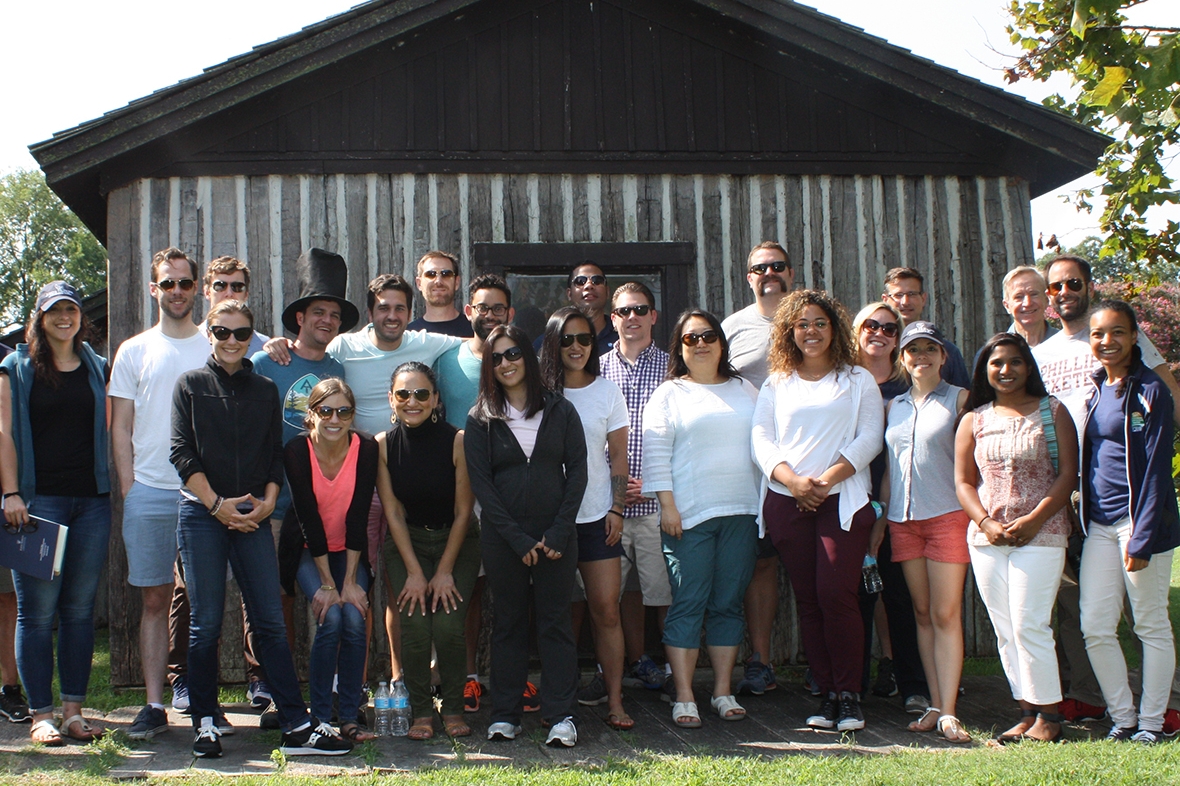Translating Leadership Theory Into Practice

Photo Caption: Students, faculty, and staff stand in front of Ulysses S. Grant’s headquarters at City Point (now Hopewell), Virginia. It was from this cabin that Grant directed the siege on Petersburg, Virginia in 1864 – 1865.
How have some of America’s most famous—and controversial—leaders made decisions during the most fraught times in our history? What processes and circumstances inform those decisions? And what can we learn from their successes and failures to guide us today? These questions framed the Master of Arts in Global Policy (MAGP) three-day leadership residency in Richmond, Virginia at the end of August 2017.
To tackle these questions, students participated in a “Staff Ride,” or a case study conducted on the ground. The Johns Hopkins SAIS Strategic Studies program has played a pioneering role in advancing the use of this teaching technique that originated as a training exercise for senior military officers. For MAGP, the exercise emphasized leadership and decision-making through the close study of the military campaigns at the end of the U.S. Civil War.
In Richmond, Tom Keaney, senior fellow at the school’s Philip Merrill Center for Strategic Studies and senior adjunct professor, kicked off the residency with lectures on leadership theory and discussions on leadership styles. He was joined by colleagues Tom Mahnken, Senior Research Professor and Director of the Advanced Strategy Program at the Merrill Center, and John McLaughlin, the former Acting Director of Central Intelligence and current Distinguished Practitioner-in-Residence at the Merrill Center, who added to the discussion with lessons learned from their experiences in government.
Students began Day 2 of the residency bright and early. Surrounded by the historic battlefields of Petersburg and Richmond, MAGP students took turns presenting a piece of Civil War history from different perspectives, including politicians, generals, foot soldiers, and journalists. Professors Keaney and Mahnken peppered the students with questions such as, Did this commander make the right decision at this juncture? How would I have acted in his place? How should one assign responsibility for failure? What actions could have led to different outcomes? What was the quality of leadership exhibited throughout? What makes some leaders risk-takers and others risk-avoiders?
In the late afternoon, students played roles in a Court of Inquiry, defending controversial decisions made by Union generals at the Battle of the Crater, described later by General Grant as “the saddest affair I have witnessed in this war.” The third day included stops at Fort Harrison, City Point, and Fort Stedman, where the students revisited critical turning points from the final days of the Overland Campaign and Civil War.
MAGP offers four experiential learning residencies, and the staff-ride was the third such residency. Students will head to Indonesia in November for their fourth residency as part of their capstone group research projects.
The staff ride drew on the strengths of MAGP’s cohort model, in which students take courses together. As Professor Keaney explained to the students, “The challenge and the pleasure of this activity lie in its character as a collective effort, and its success rests on the participants themselves.”
Along the way, students enjoyed ample opportunities to get to know each other better, including on a walking tour of Richmond and the state capitol, and over shared meals in Richmond and at the historic Half Way House restaurant (built 1760), a stopping point on the old coach line between Richmond and Petersburg.